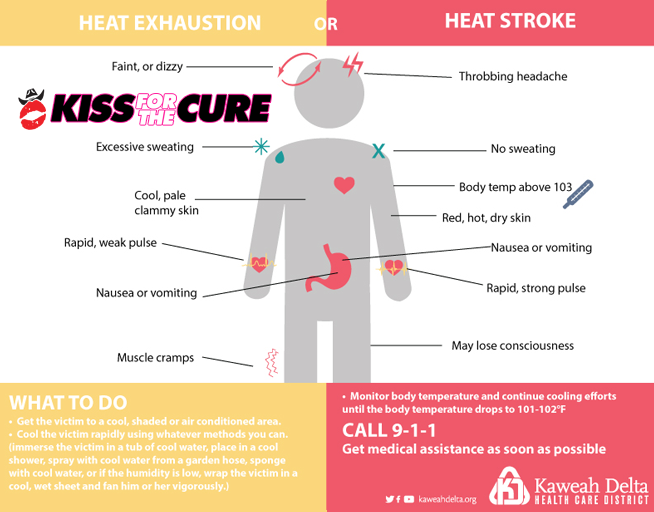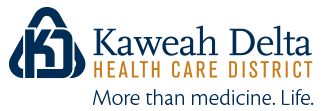
Did you know the sun\’s ultraviolet rays can damage your skin in as little as 15 minutes? Hi, this is Jody Jo. Summer is here in the Central Valley! Here are some tips to help you have a safe and healthy summer from Kaweah Delta Health Care District.
When you plan your outdoor activities, please make sure you wear sunscreen and reapply often. It will help you avoid painful sunburns as well as protect your skin from premature aging and skin cancer. Use an SPF of at least 15 for adults and 30 for children. Hats are great to help protect you from the sun but don\’t forget to protect your eyes especially when you are out on the water. The sun\’s rays bounce off the water and can damage your eyes so wear sunglasses!
Most importantly don\’t forget to stay hydrated! Drink lots of water! It is very important to stay hydrated especially in triple digit heat, to avoid heat exhaustion and heat stroke. To learn more about Summer Safety go to KaweahDelta.org.
SPONSORED BY:
ENSURE A SAFE AND HEALTHY SUMMER
Summer typically means fun in the sun and water but it can also bring on some seasonally-specific health concerns and conditions. Make it a safe and healthy summer this year!
Be mindful of:
- Sunburn
- Choose lightweight, light-colored, loose-fitting clothing.
- In the hot sun, a wide-brimmed hat will keep the head cool and sunglasses to shield the eyes.
- Sunburn affects your body\’s ability to cool itself and causes a loss of body fluids. It also causes pain and damages the skin. A variety of sunscreens are available to reduce the risk of sunburn. Check the sun protection factor (SPF) number on the label of the sunscreen container. Select SPF 15 or higher and follow package directions (SPF 30 or higher is recommended for children). Apply liberally and often.
- Try to stay out of the sun during peak hours, 10 am – 4 pm
- When outdoors, seek shade as often as possible.
Heat Stroke and Heat Exhaustion
Two common problems are heat stroke and heat exhaustion. Heat stroke occurs when the body becomes unable to control its temperature. The body\’s temperature rises rapidly, the sweating mechanism fails, and the body is unable to cool down. Body temperature may rise to 106°F or higher. Heat stroke can cause death or permanent disability if emergency treatment is not given. Heat exhaustion is the body\’s response to an excessive loss of water and salt contained in sweat. People most prone to heat exhaustion are the elderly and those working or exercising in a hot environment.
Warning signs of heat stroke vary but may include:
- An extremely high body temperature (above 103°F, orally)
- Unconsciousness
- Dizziness, nausea, and confusion
- Red, hot, and dry skin (no sweating)
- Rapid, strong pulse
- Throbbing headache
Warning signs of heat exhaustion vary but may include:
- Heavy sweating
- Muscle cramps
- Weakness
- Headache
- Nausea or vomiting
- Paleness, tiredness, and dizziness
What to Do
If you see any of these signs, you may be dealing with a life-threatening emergency. Have someone call for immediate medical assistance while you begin cooling the victim:
- Get the victim to a shady area
- Cool the victim rapidly using whatever methods you can. For example, immerse the victim in a tub of cool water, place in a cool shower, spray with cool water from a garden hose, sponge with cool water, or if the humidity is low, wrap the victim in a cool, wet sheet and fan him or her vigorously
- Monitor body temperature and continue cooling efforts until the body temperature drops to 101-102°F
- If emergency medical personnel are delayed, call the hospital emergency room for further instructions
- Do not give the victim alcohol to drink
- Get medical assistance as soon as possible
Dehydration
- Increase your fluid intake regardless of your activity level.
- During heavy exercise in hot weather, drink 2-4 glasses (16-32 ounces) of cool fluids each hour.
- During hot weather, you will need to drink more liquid than your thirst indicates. This is especially true for those over 65 years of age.
- Avoid very cold beverages to prevent stomach cramps or drinks containing alcohol, which will actually cause you to lose more fluid.
- Drinking water in lieu of juice, sodas or sugary drinks is your best choice.
Bug Bites and Stings
- Use insect repellent. To protect against mosquitoes, ticks and other bugs, use insect repellent that contains 20 to 30 percent DEET on exposed skin and clothing. Always follow the instructions on the repellent and reapply as directed.
- If you are also wearing sunscreen, apply your sunscreen first, let it dry, and then apply the insect repellent. Do not use sunscreen that contains insect repellent, as sunscreen must be applied liberally and often while insect repellant should be applied sparingly.
- Wear appropriate clothing. If you know you’re going to be out at night or hiking in a densely-wooded area, dress appropriately to prevent bug bites. Cover exposed skin as much as possible by wearing long-sleeved shirts, pants, socks and closed shoes instead of sandals.
- For additional protection, pull your socks up over your pants and tuck your shirt into your pants.
Sometimes, despite one’s greatest efforts, bug bites still happen. Fortunately, most bug bites and stings can be safely treated at home. To treat bug bites and stings at home, dermatologists recommend the following tips:
- For painful bites, such as a bee sting, take an over-the-counter painkiller, such as acetaminophen or ibuprofen. Always follow the directions on the label and use the correct dose.
- For bites that itch, apply an ice pack or an over-the-counter anti-itch cream, such as hydrocortisone. Another option is to take an over-the-counter oral antihistamine.
- To reduce swelling, apply an ice pack to the bite.
If you experience any serious symptoms after a bug bite, such as a rash, fever, or body aches, see your doctor immediately. Make sure you tell the doctor about your recent bite so that they can examine you for a transmitted disease.







